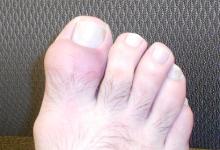Interstitial Lung Disease Not Increased with Biologics Save

Extraarticular manifestations affect more then half of rheumatoid arthritis (RA) patients, and interstitial lung disease or "RA lung" is one of the more prevalent. The frequency of ILD in patients with RA varies from 5% to 58%.
Curtis and colleagues analyzed the risk of ILD in RA patients by analyzing those on abatacept, rituximab, tocilizumab, or anti-TNF therapy. Patients were drawn from the MarketScan databases (2010–2012).
Among the 11,219 patients exposed to biologics (for a mean follow-up was 0.7 years), those receiving a non-TNF biologic were more likely to have had recent exposure to steroids, prior exposure to a greater number of biologics, and a history of ILD, anemia, chronic obstructive pulmonary disease, and other pulmonary conditions.
Unadjusted ILD incidence rates ranged from 4.0 (1.6–8.2, abatacept) to 12.2 (5.6–23.2, infliximab) per 1000 person-years. The risk of ILD was greatest in those who were older (HR 3.5; 95 % CI 2.1–6.0), male (HR 3.1; 95 % CI 1.2–8.4), or having another pulmonary condition (HR 4.8; 95 % CI 1.7–13.7). Patients with a history of ILD were more likely to receive rituximab (19.8 % versus 8.5 %; P < 0.0001) and significantly less likely to receive anti-TNF therapy (46.5 % versus 59.8 %; P < 0.0001).
There were no significant differences by biologic class and recent methotrexate exposure was associated with reduced ILD hospitalization (HR 0.16; 95 % CI 0.06–0.46).
There were no significant differences in the risk of ILD and its related complications between RA patients receiving anti-TNFα agents and those receiving alternate non-TNFi biologic agents.







If you are a health practitioner, you may Login/Register to comment.
Due to the nature of these comment forums, only health practitioners are allowed to comment at this time.